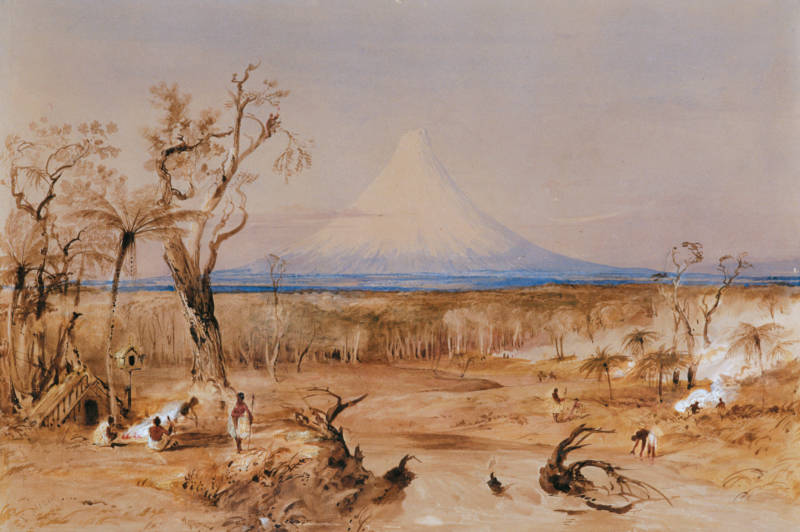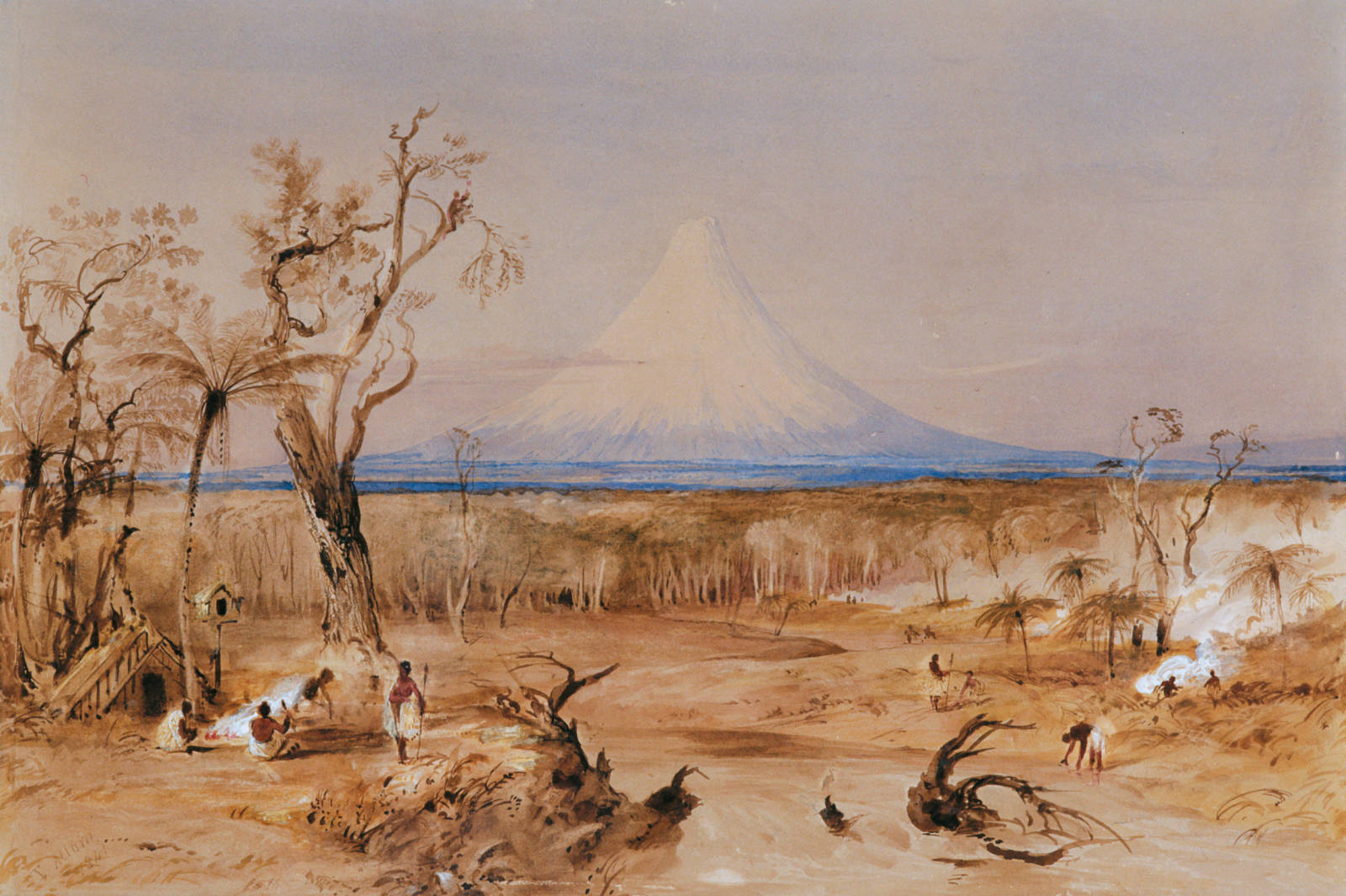ALLOM, Thomas;
Mount Taranaki from the North Shore of Cook Strait, New Zealand
1841
Watercolour on paper
555 x 777mm

Original title: ‘Mount Egmont, from the North Shore of Cooke’s Strait, New Zealand. Natives Burning off Wood for Potato Grounds.’
The following two texts were written for Te Huringa/Turning Points and reflect the curatorial approach taken for that exhibition.
Peter Shaw
Thomas Allom never visited Aotearoa. However, his son, Albert James Allom (1831–1909), arrived as a survey cadet in 1842 and remained here until the late 1880s, when he moved to Tasmania. In London, Thomas Allom made plates for lithographs based on watercolours and drawings by Charles Heaphy published by the New Zealand Company.
This painting is closely based on Heaphy’s 1840 watercolour Mount Egmont from the Southward, from which Allom also made a lithograph in 1841 for the publishers Smith, Elder & Co. He probably consulted Augustus Earle’s 1839 Sketches Illustrative of the Native Inhabitants and Islands of New Zealand when adding the incidental Māori figures. He also changed the nature of the delicate screen of trees symmetrically placed on either side of the mountain that were such a feature of Heaphy’s watercolour. However, he did nothing to disturb the proportions of the original work’s extraordinarily symmetrical cone of Taranaki.
Jo Diamond
In spite of its title, the Māori people depicted in this picture seem incidental. Their activities set within a brownish landscape look overshadowed by the Charles Heaphy-inspired, oddly-shaped mountain in the background. The adding of Māori people, their dwellings and lifestyles to such a landscape composition was an artistic fashion whose purpose was to attract the interest of a foreign audience. A record of land features such as mountains, rather than people, was often the primary motive for colonial paintings. The fact that Thomas Allom never visited Aotearoa and is highly unlikely to have known any Māori people adds to the general impression that this picture is pure fantasy, though we are able to turn the tables on that interpretation.
To dismiss this painting as purely imaginary is also to dismiss its human component, namely the Māori people within it. Due credit should be given to them, at least, in that they remind us that Taranaki land was always worked industriously, often over and above subsistence levels. Importantly, too, a renewed sense of mana recognises that historical links with the land may be traced back well before the arrival of British colonisation. In Taranaki, as well as in all other rohe (tribal territories), this link has been vigorously defended against the negative effects of colonialist expansion. Allom could have never predicted that his painting of those unidentified ‘Natives’ could so aptly symbolise the persistence and strength of Māori culture up to this very day.
Exhibition History
Te Huringa/Turning Points: Pākehā Colonisation and Māori Empowerment, Sarjeant Gallery Te Whare o Rehua, Whanganui, 8 April to 16 July 2006 (toured)
Provenance
2000–
Fletcher Trust Collection, purchased June 2000
–2000
Unknown

